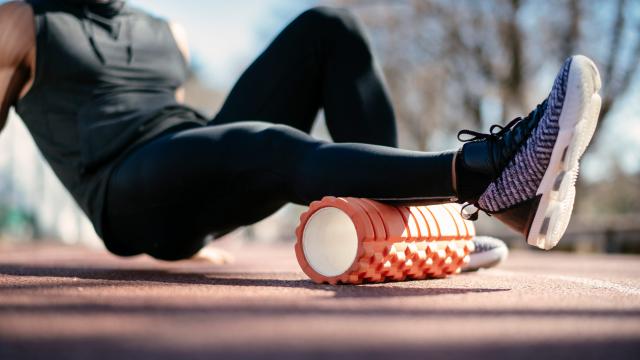If you’re new to exercising, or if you just feel a little awkward about working it into your day, it will help to have a routine that transitions you from your non-exercising life into getting ready for the day’s sweat session.
The exact steps of your routine will differ from person to person, but you get to build one that works for you alone. Here are some ideas, but feel free to skip any steps that don’t make sense for you. You don’t have to do everything; think of this as a menu to choose from.
Eat a pre-workout meal or shake
If you exercise first thing in the morning, you’re training “fasted.” Some people prefer this, but in general you will feel more sluggish and possibly won’t run as fast or lift as heavy as if you had eaten.
If you’ve eaten a meal in the last few hours, this isn’t as important. But if it makes sense to have some food before you work out, consider a small meal or shake right beforehand, or a larger meal if you can plan it for an hour or two before training.
Before I go for a run, my favourite breakfast is a Clif bar or a cup of overnight oats (1/2 cup each of oats, almond milk, and yogurt, plus a little fruit). Before lifting, I prefer something with more protein, like a shake made with one cup of almond milk and a scoop of whey protein powder.
Get dressed
Changing into workout clothes takes time, and I find it’s important when planning a workout to make sure that I’ve accounted for that rather than wondering at the end of the workout why I’ve been running 15 minutes late.
Your choice of clothes doesn’t have to be complicated, just appropriate. It’s no fun to find out today’s workout has a lot of jump rope and you aren’t wearing your good sports bra, or deadlifts but you’re wearing shorts and forgot your deadlift socks. Check out the day’s workout plan before getting dressed.
Set up what you’ll need that day
If you go to a gym, this could mean packing your bag. At home, there may be more to do to set up. Don’t resent that you have to move the couch before your workout; just plan it into your routine.
I have a sequence for how I begin a workout in my garage gym. I come downstairs with my coffee and snack, and I open the garage door. After I set my things down, I drag my horse stall mat into its designated area in the driveway. Then I put on my weightlifting shoes and set up the day’s page in my training journal.
[referenced url=”https://www.lifehacker.com.au/2020/06/your-home-gym-needs-these-underrated-upgrades/” thumb=”https://www.gizmodo.com.au/wp-content/uploads/sites/4/2020/06/19/un1t22jl30sjfuxuwukd-300×169.jpg” title=”Your Home Gym Needs These Underrated Upgrades” excerpt=”I’ve been training at home since March, and I’ve gotten to know my home gym (aka “some piles of rusty stuff in my garage”) pretty well during this time. Besides the obvious ” weights and such ” it turns out there are a few little things that can make a…”]
I find it useful to have a specific order for things, because then you can do them on autopilot, and you won’t be surprised mid-workout to find that you don’t have something you need. The act of going through the routine also marks a transition from your everyday life into the workout. It’s like a mental warmup.
Foam roll or do dynamic stretches
This is one that I personally skip, but a lot of people love. Do you feel stiff at the beginning of your workout? Do you need to reawaken some flexibility before you get into your main exercises?
If so, dynamic stretches like high knees and butt kicks are a good way to loosen up. We’ve collected some of our favourite dynamic stretching videos here.
Traditional, “static” stretching isn’t actually a very good warmup, so I wouldn’t recommend it unless it serves a specific purpose for you. (If you’ve always done it and it’s part of your routine, that may well be its purpose.)
Another alternative to stretching is foam rolling. A roller can loosen you up in a similar way as dynamic stretching, while giving you a massage-like start to your workout. Like stretching, it’s something to use if it works for you, and to skip if you’ve tried it and don’t love it.
Do some easy cardio
Part of the point of warming up is to get you literally warm. Even if you plan to just lift, a short cardio warmup can help prime you for the real workout.
If you’re going to do cardio in your workout ” you’re heading out for a run, for instance ” definitely start off with easy cardio. If you’re doing a long run, that may just mean going slow for the first mile, before settling into your usual pace. If you’re planning a HIIT workout or something else intense, I find 10 minutes on the exercise bike or jogging around the block can help the beginning of the “real” workout not to feel so awful.
Work up to each heavy exercise
This one is for the lifters. The first few sets of any exercise should be a lighter version of what you plan to work up to.
So if you want to do squats, and you plan to load up 68 kg for your work sets, you’ll want to do several sets working up to that. A typical sequence might be something like:
- Just the empty bar (20 kg)
- 45 kg
- 60 kg
- 70 kg
Some people prefer more warmup sets with smaller jumps between them; some will take bigger leaps. A very light exercise might not require any warmup sets at all ” curls with 9 kg dumbbells, say ” but anything big or tricky will benefit from a proper warmup.

Comments